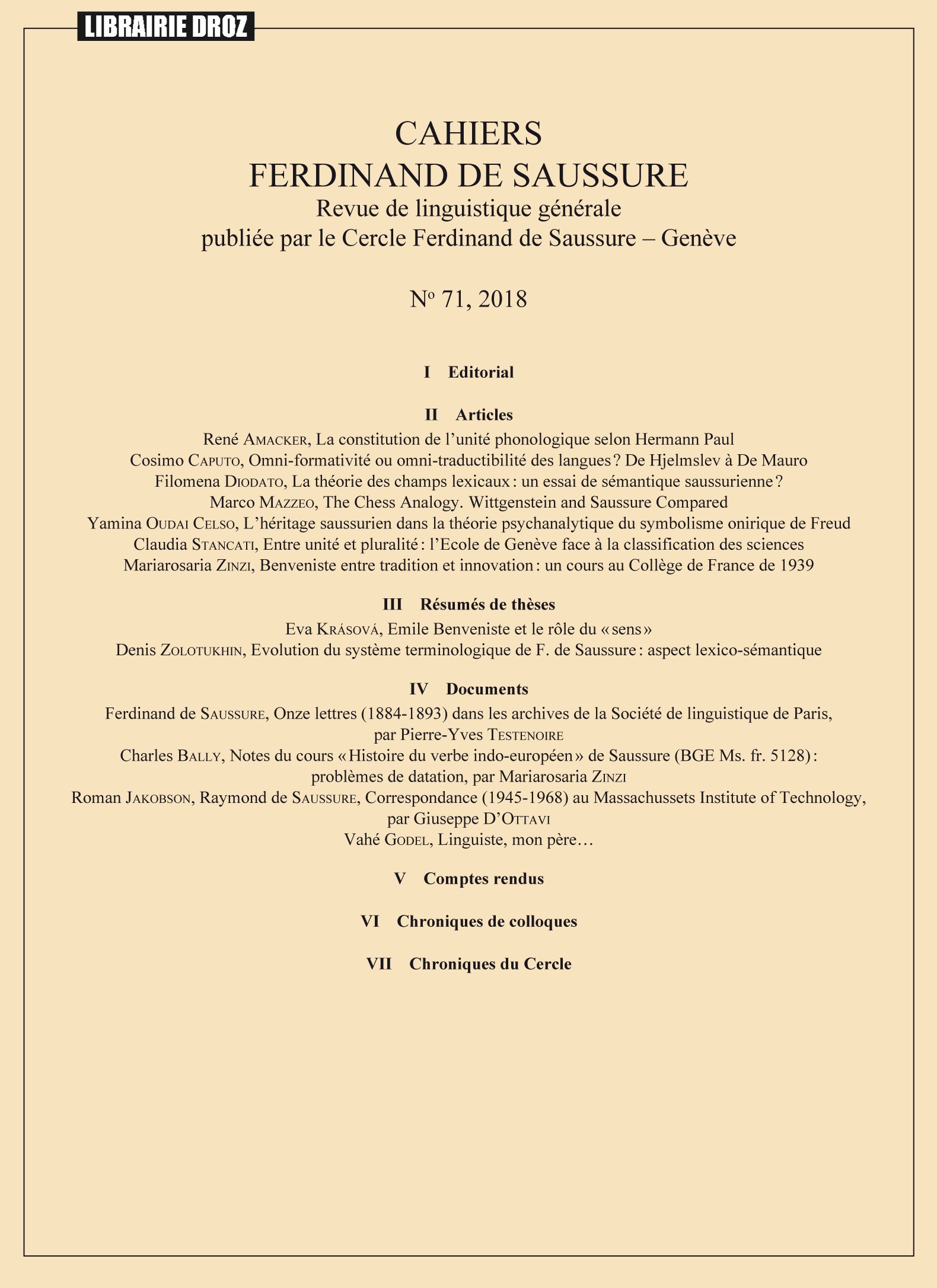L’héritage saussurien dans la théorie psychanalytique du symbolisme onirique de Freud
Résumé
While the dream is defined by Freud as “the royal road to the unconscious,” it is evident that its interpretation plays a crucial role to decode the symbolic language of Es. Just like Lacan’s “Ça”, while Freud’s Es “speaks”, it uses several means of expression, such as slip, wit, neurotic symptom, forgetfulness, missed act and so on. Among them the dream, with its mysterious and hallucinatory disguises, and the anthropological roots of its interpretive practices, stands out because of its extraordinary linguistic and cultural complexity. Furthermore Freud, from the famous Traumdeutung (1899) to the essay Über den Gegensinn der Urworte (1910), is already witnessing a real reversal of perspective, namely a very interesting evolution of his theory of oneiric symbolism: after a rather mechanical and abstract first approach – the so-called Chiffriermethode –, based on a rigid and pre-determined correspondence between the “manifest content” and the “latent content” of each element of the oneiric material, we finally see a much more refined and linguistically complex symbology, i.e. a hermeneutic theory which identifies in each patient, by the method of free associations, the Traumbuch or “book of dreams” of himself. Following some precious suggestions from Michel Arrivé’s essays, this paper aims to check whether certain aspects of Saussure’s theory and the CLG – this huge and complex toolbox he created – allow us to question more punctually and fruitfully several passages of Freud’s texts about dreams in order to better understand them.
